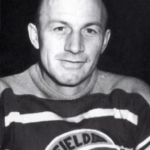Hockey in the seventies became a decade of change for the sport, marked by iconic moments that shaped the game’s history. From the expansion era that brought new teams and rivalries to the forefront, to groundbreaking international competitions like the Summit Series, the 1970s witnessed game-changing events that captivated fans worldwide. The Montreal Canadiens established themselves as a dynasty, while European players began to make their mark, influencing the style of play in North American hockey. Superstars like Bobby Orr redefined the role of defensemen, and goaltenders embraced a revolutionary technique known as the butterfly style. Additionally, the era saw the rise of the physical and intimidating Philadelphia Flyers, known as the Broad Street Bullies. Join us on a journey as we explore the iconic moments that shaped pro hockey in the 1970s, forever leaving their mark on the sport.
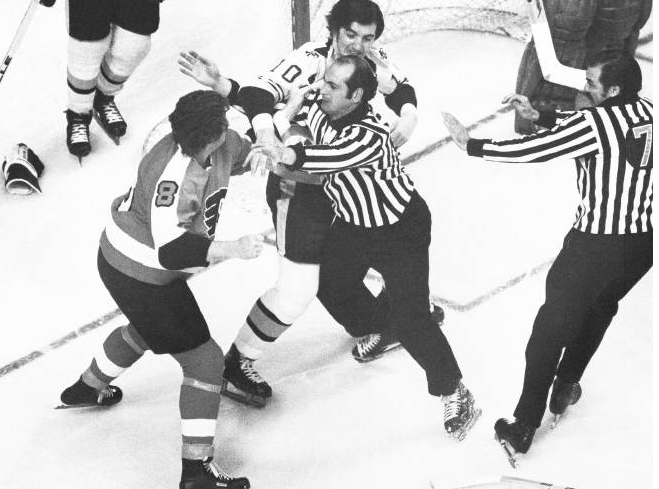
NHL Hockey in the seventies
New Teams Enter the League
The NHL expanded from six to twelve teams in the 1968 season and in the 1970s, the league expanded its horizons even more, bringing new teams into the fold and introducing hockey to untapped markets. Franchises like the Vancouver Canucks, Buffalo Sabres, and New York Islanders entered the league, bringing the total number of teams to 18. This expansion not only brought the game to new cities but also created fierce rivalries that would become the stuff of legend.
The Philadelphia Flyers and the Boston Bruins engaged in brutal confrontations. The Flyer’s were known as the “Broad Street Bullies” and Boston was known as the “Big Bad Bruins”. This NHL rivalry showcased the physicality and toughness that defined the game in the 70s.
The Summit Series: A Historic Clash of Hockey Titans
One of the most iconic moments of the 1970s was the Summit Series, a historic clash between Canadian and Soviet Union hockey teams. In 1972, tensions were high as the best players from both countries battled for hockey supremacy. The series showcased the contrasting styles of play and ignited a fierce rivalry between two hockey powerhouses.
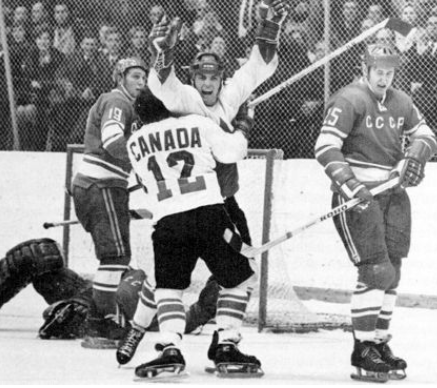
Paul Henderson: Winning goal in Summit Series
The Summit Series captivated the world as fans watched in awe of the skill and intensity on display. The iconic image of Paul Henderson scoring the winning goal in the final moments of the eighth game still resonates today, forever etching this series into hockey lore. This moment not only solidified Canada’s prowess in the sport but also opened the door for increased international competition and collaboration in hockey.
The Birth of Dynasty: The Montreal Canadiens’ Unprecedented Success
During the 1970s, the Montreal Canadiens established themselves as a true dynasty, achieving unprecedented success in pro hockey. The Habs captured four consecutive Stanley Cup championships from 1976 to 1979, cementing their dominance and etching their names in hockey history.
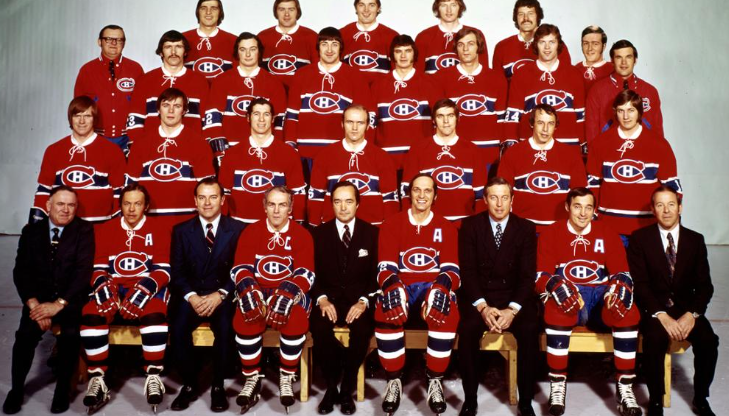
Led by legendary coach Scotty Bowman and a roster of star players like Guy Lafleur, Larry Robinson, and Ken Dryden, the Canadiens were a force to be reckoned with. Their style of play, known for its speed and finesse, revolutionized the game, influencing generations to come. The Canadiens’ remarkable run in the 70s showcased the power of teamwork and the indelible impact of superstars, solidifying their place among the all-time great teams in hockey.
The 1970s were a game-changing decade in pro hockey. From the expansion of the league to historic clashes on the ice, these years brought about significant shifts and memorable moments that shaped the sport. Whether it was the introduction of new teams, legendary international competitions, or the rise of dominant dynasties, the 70s laid the foundation for the evolution of hockey into the beloved sport we know today.
Changing the Game: The Emergence of European Influence in North American Hockey
European Players Make Their Mark
Back in the 1970s, the hockey world was hit with a breath of fresh air in the form of European players. These slick-skating, stickhandling wizards brought a new level of finesse and skill to the North American game. From the Soviet Union to Sweden, players like Valeri Kharlamov and Borje Salming quickly made a name for themselves and showed the hockey world that there was more than one way to dominate on the ice. Suddenly, the NHL was not just a North American affair anymore, and fans embraced the international flair that these players brought to the game
A New Style of Play
But it wasn’t just the players themselves that changed the game—it was their style of play too. European players introduced a more finesse-oriented approach, focusing on puck possession, strategic passing, and precise stickwork. These skills were a stark contrast to the rugged, physical style that had dominated North American hockey for decades. Suddenly, the game became faster, more creative, and more unpredictable. The European influence forced NHL teams to adapt and incorporate new tactics, forever altering the landscape of the sport.
The Bobby Orr Phenomenon: Redefining the Role of Defensemen
Orr’s Unparalleled Skill and Impact

When we talk about game changers in the 1970s, it’s impossible not to mention Bobby Orr. This electrifying defenseman revolutionized the role of defensemen in ways no one had ever seen before. With his lightning speed, unmatched puck-handling ability, and an uncanny hockey IQ, Orr was a force to be reckoned with. He shattered records, won multiple Norris Trophies, and even became the only defenseman in NHL history to win the league’s scoring title. His impact on the game was so profound that he set a new bar for what a defenseman could achieve
Redefining Defense in the NHL
Thanks to Orr’s brilliance, defensemen were no longer just stay-at-home players solely focused on preventing goals. They became offensive catalysts, joining the rush and contributing to their team’s attack. Orr’s style of play inspired a generation of young players to embrace a more dynamic approach to the game, forever changing the perception and expectations of the defenseman position. To this day, Orr’s legacy lives on in the highlight reels and in the play of every defenseman who dares to dream big
Goaltending Revolution: The Rise of the Butterfly Style
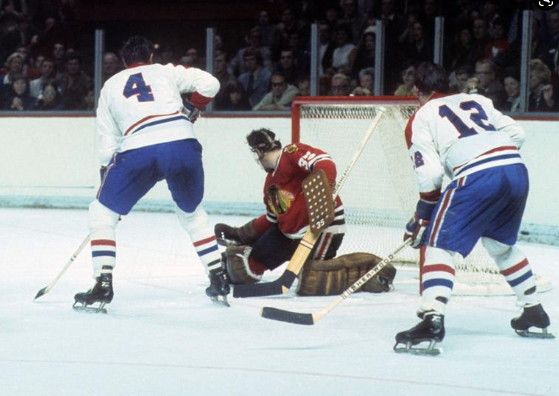
The Butterfly Technique Takes Hold
In the 1970s, the art of goaltending underwent a seismic shift with the emergence of the butterfly style. The butterfly technique, popularized by goaltenders like Glen Hall and Roger Crozier in the sixties was taken to a new level by Tony Esposito and Ken Dryden. It involved dropping to the ice and using the leg pads to cover the bottom portion of the net. This technique effectively minimized the number of goals scored from low shots, forcing shooters to aim higher to find the back of the net. The butterfly style became the new norm, and goaltenders who could execute it well became the backbone of their teams.
Impact on Goaltending Strategy
The butterfly style not only changed the way goaltenders played the game but also influenced offensive strategy. Shooters had to adapt, using different techniques to beat the ever-expanding leg pads and find new ways to score. The butterfly style turned goaltending into a game of strategic chess, where positioning and anticipation became paramount. It also paved the way for future innovations in goaltending equipment, as manufacturers sought to develop gear that maximized the effectiveness of the butterfly technique. In the end, this revolution forever altered the dynamics between shooters and goaltenders, making the game even more challenging and exciting.
The Broad Street Bullies: Philadelphia Flyers and the Physicality of the Game
The Flyers’ Intimidating Style

The Philadelphia Flyers of the 1970s, known as the Broad Street Bullies, took physicality to a whole new level. Led by larger-than-life personalities like Dave Schultz and Bobby Clarke, the Flyers embraced a bruising, hard-hitting style of play that sent shockwaves through the league. They were not afraid to mix it up, dropping the gloves and engaging in fisticuffs with anyone who dared to challenge them. Their intimidating presence on the ice struck fear into opponents and redefined the physicality of the game.
The Legacy of the Broad Street Bullies
While the Flyers’ aggressive style of play drew both admiration and criticism, there’s no denying the impact they had on the sport. The Broad Street Bullies showed the hockey world that toughness and physicality could be just as valuable as skill and finesse. Their style of play inspired other teams to toughen up and made enforcers a sought-after commodity in the NHL. The legacy of the Broad Street Bullies is still felt today, even as the game continues to evolve. Their brand of hard-nosed hockey forever left an indelible mark on the sport.
Conclusion:
As we reflect on the iconic moments of pro hockey in the 1970s, it becomes clear that this decade was a game-changer in every sense. From the expansion of the league to the emergence of new playing styles and the dominance of legendary teams, the 1970s shaped the sport’s future and left an indelible mark on its history. These moments continue to inspire and captivate fans, reminding us of the enduring legacy of those who paved the way for the modern game. From the Summit Series to the Broad Street Bullies, the 1970s will forever be remembered as one of the golden eras of pro hockey.
Thanks for your time. Please leave comments and suggestions below.




